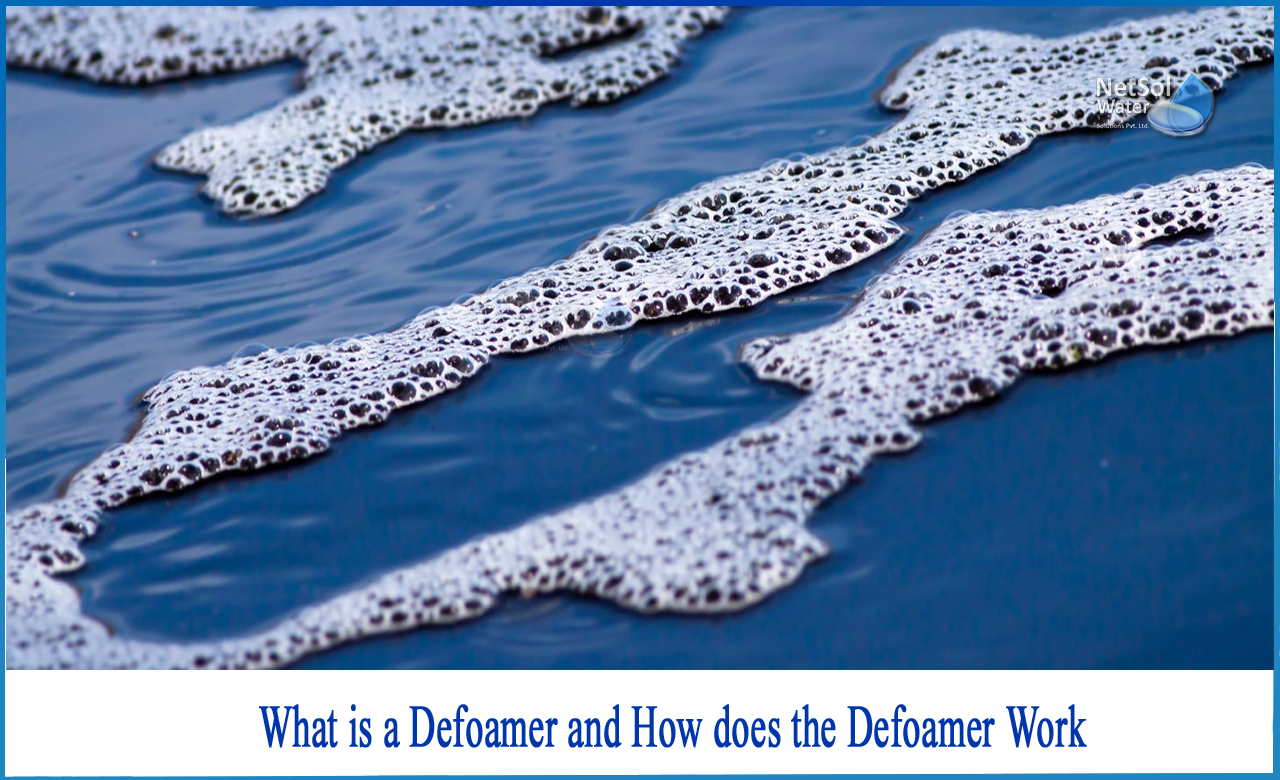What is a defoamer and How does the defoamer work?
Defoamers, and mould release agents are chemical treatment aids used in industrial activities to minimize or eliminate foam.
In other words, defoamers are a foam control agents added to the system to reduce or eliminate foam after it is formed. For convenience, the term "foaming agent" is commonly used as an industry standard when referring to foam control treatment aids.
What is a bubble?
Bubbles are formed when the gas is introduced into the solution and stabilized. In pure liquids (such as water), the bubbles are thermodynamically unstable and the bubbles quickly rise to the surface and burst.
Gravity drains the liquid from the foam, forming”dry" polyhedral foam that begins from the top to the bottom of the foam. The individual bubbles differ in size and capillary pressure within the foam, allowing the gas to naturally diffuse from smaller, higher pressure bubbles to larger bubbles. However, as the foamed film stretches, the concentration of surfactant decreases. This decrease in concentration increases the surface tension of the foam film, preventing air bubble coalescence and stabilizing the foam.
How does the defoamer work?
In general, one of the main requirements for defoamersis partial solubility. Basically, the defoamer should be "half in, half out".
If it is too "inside" (i.e., too dispersive or soluble), it does not destroy the foam and can even contribute to additional foaming. If it is too far away (that is, it cannot be sufficiently dispersed in the system or is insoluble), it can adhere to equipment, cause surface defects, and cause other problems. Defoamer formulations should be intentionally prescribed to achieve the appropriate level of compatibility.
In addition, the defoamer must have low surface tension and spread rapidly along the gas-liquid interface in order to achieve maximum interaction with the foam. An effective defoaming agent must be able to replace the foam stabilizing surfactant and penetrate the foam lamella during diffusion to allow the trapped gas to escape and the foam to burst.
Defoamer chemistry
The defoaming agent for a particular solution depends on many factors, such as chemical composition and physical properties of the foam solution, the method of foam formation, and the type of foam present.
Defoamers are usually formulated around carrier liquids such as hydrocarbons, silicone oils, vegetable oils and synthetic polymers. Agents that aid in foam spreading or destabilization are hydrophobic particles such as waxes, metal salts, silica, or other. An emulsifying system can be incorporated to optimize the distribution of defoamers and their compatibility with specific foam systems. Also, depending on the chemistry, stabilizers such as cellulosic or acrylic thickeners can be added to improve storage stability.
Below are some of the broader categories of defoamers and their common uses:
1: Silicone and Organic Silicone Defoamers
Silicone and organic silicone defoamers are highly efficient and widely effective in a variety of applications. These products are based on silicone oil, often with hydrophobic silica dispersed in the solution. The very low surface tension of silicone oil contributes to its rapid spread at the gas-liquid interface, facilitating the weakening of the foam film and its penetration into the bladder wall. Netsol can arrange these types of products as 100% silicone compounds, dispersions, or emulsions that can be easily dispersed in water systems.
2:Silicone-free defoamer
Non-silicone Defoamers can be further divided into several categories. The most common are petroleum-based for optimal performance and low cost depending on the properties, suitability, and needs of a particular foam system. These defoamers often contain hydrophobic particles (silica, wax, etc.) to enhance performance and can be supplied as insoluble or partially soluble dispersions, emulsions, or 100% self-emulsifying liquids.
These products are excellent alternatives to traditional mineral oil-based products used in adhesives, paints, coating defoamers, and many other applications.
Defoamers and industrial applications of defoamers
Foam is a serious problem in many material handling and processing operations. If not controlled, it can lead to reduction in processing efficiency. It can affect the quality of products such as inks, coatings, paints, beverages, wastewater and textiles.
Netsol Water is Greater Noida-based leading water & wastewater treatment plant manufacturer. We are industry's most demanding company based on client review and work quality. We are known as best commercial RO plant manufacturers, industrial RO plant manufacturer, sewage treatment plant manufacturer, Water Softener Plant Manufacturers and effluent treatment plant manufacturers. Apart from this 24x7 customer support is our USP. Call on +91-9650608473, or write us at enquiry@netsolwater.com for any support, inquiry or product-purchase related query.



